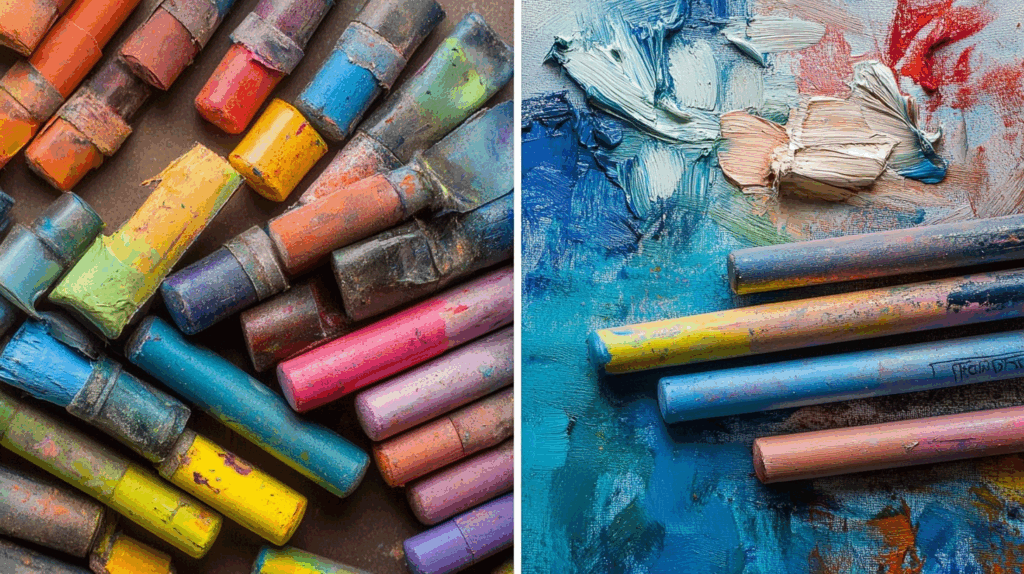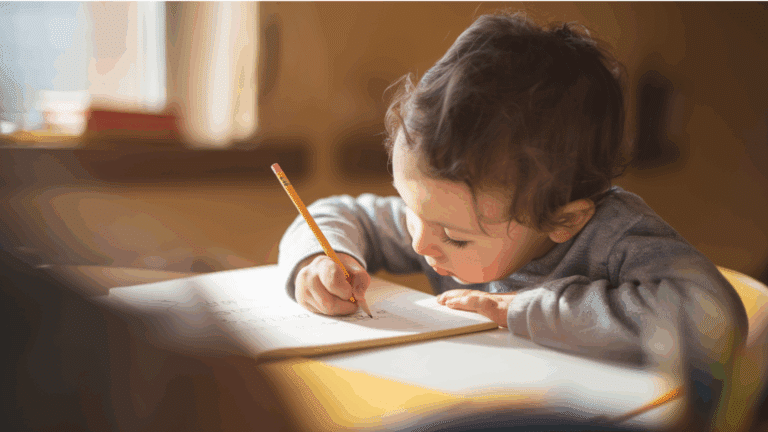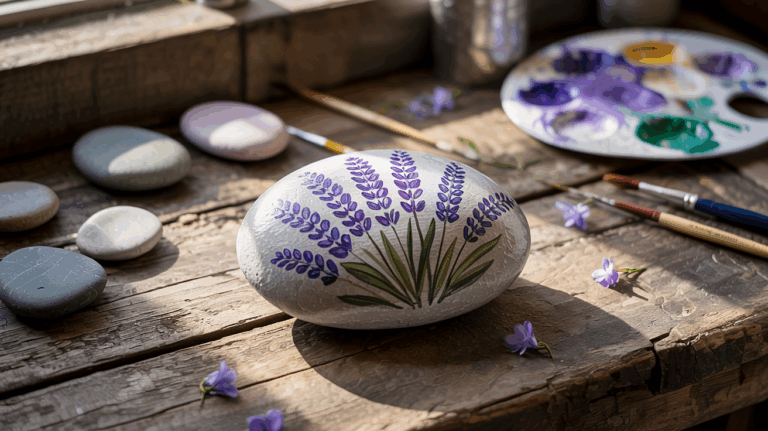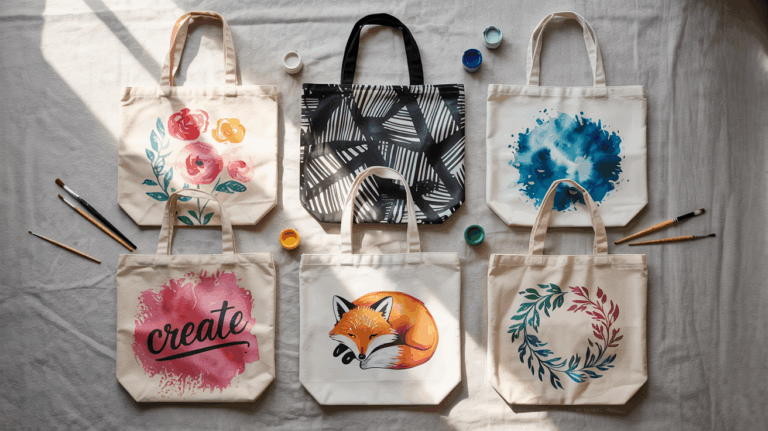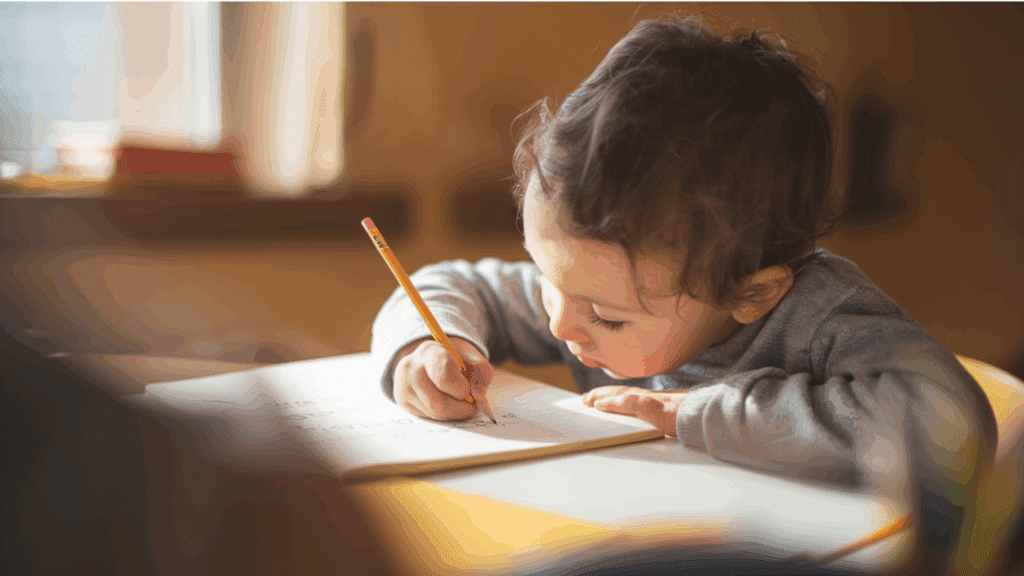Are pastels confusing you?
Many artists face a common problem when choosing pastels. They stand in art supply stores, staring at two similar-looking options, unsure which to pick. It’s frustrating to spend money on the wrong tools that might not suit your art style or goals.
You don’t need to feel lost anymore! This guide does an elaborate explanation of soft pastels vs oil pastels in simple terms. We’ll look at how they work, their good and bad points, and what art styles they fit best.
By the end of this post, you’ll know exactly which pastel type matches your needs. Let’s start making your art supply choices easier.
What Are Soft Pastels and Oil Pastels?
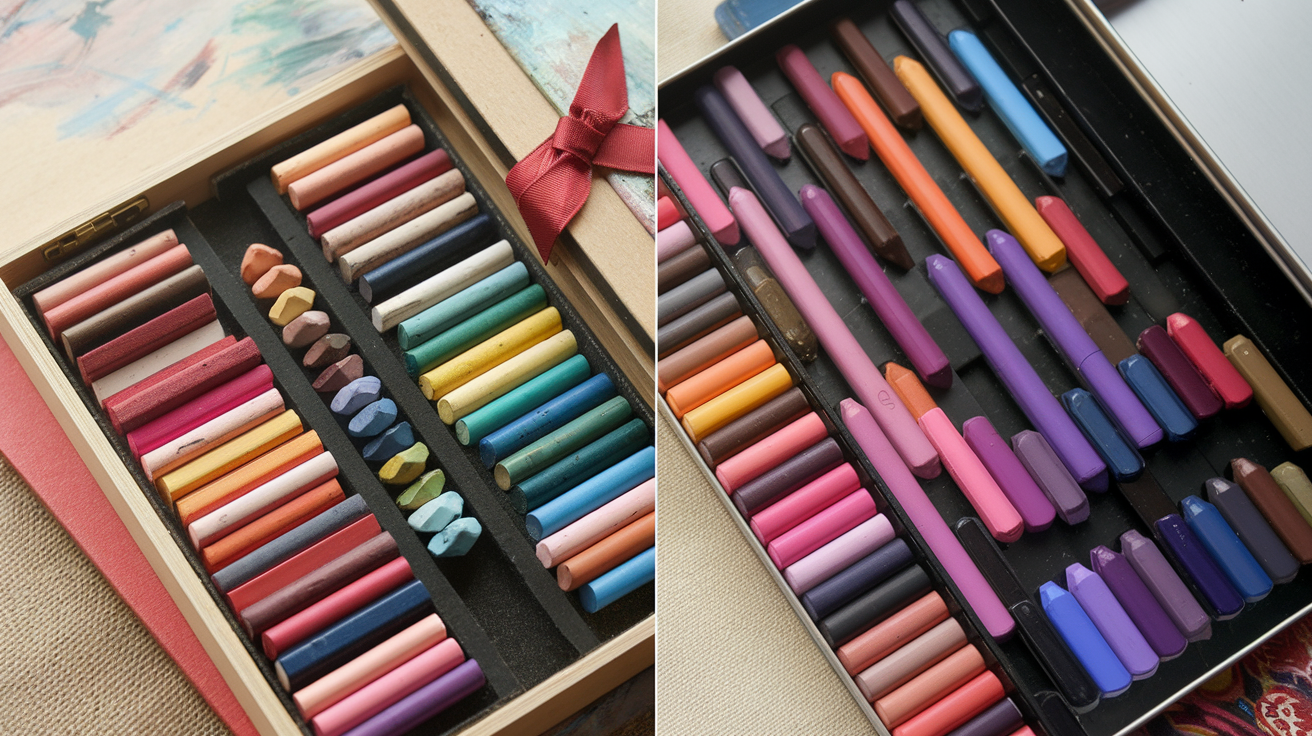
Soft pastels and oil pastels are two popular art tools with key differences.
Soft pastels contain pure pigment mixed with a small amount of binder, giving them a chalky, powdery texture that breaks easily. They create smooth blends and soft color layers that can be smudged with fingers or tools.
When you use soft pastels, they leave a dusty residue and need a fixative spray to set the artwork. Unlike watercolors, which flow and move with water, pastels stay where you place them, offering more direct control over color placement.
To understand watercolor more aptly, check out our blog “Trending Beginner Watercolor Landscape Techniques.”
Oil pastels, in contrast, contain pigment mixed with non-drying oil and wax binders. They have a creamy, crayon-like feel that doesn’t break easily or create dust. Oil pastels stay workable longer and don’t need a fixative, but they can be harder to blend. Each type offers unique qualities that fit different art styles and methods.
Artists often choose between them based on the effect they want to create and their working style.
Understanding the Similarities Between Soft Pastels and Oil Pastels
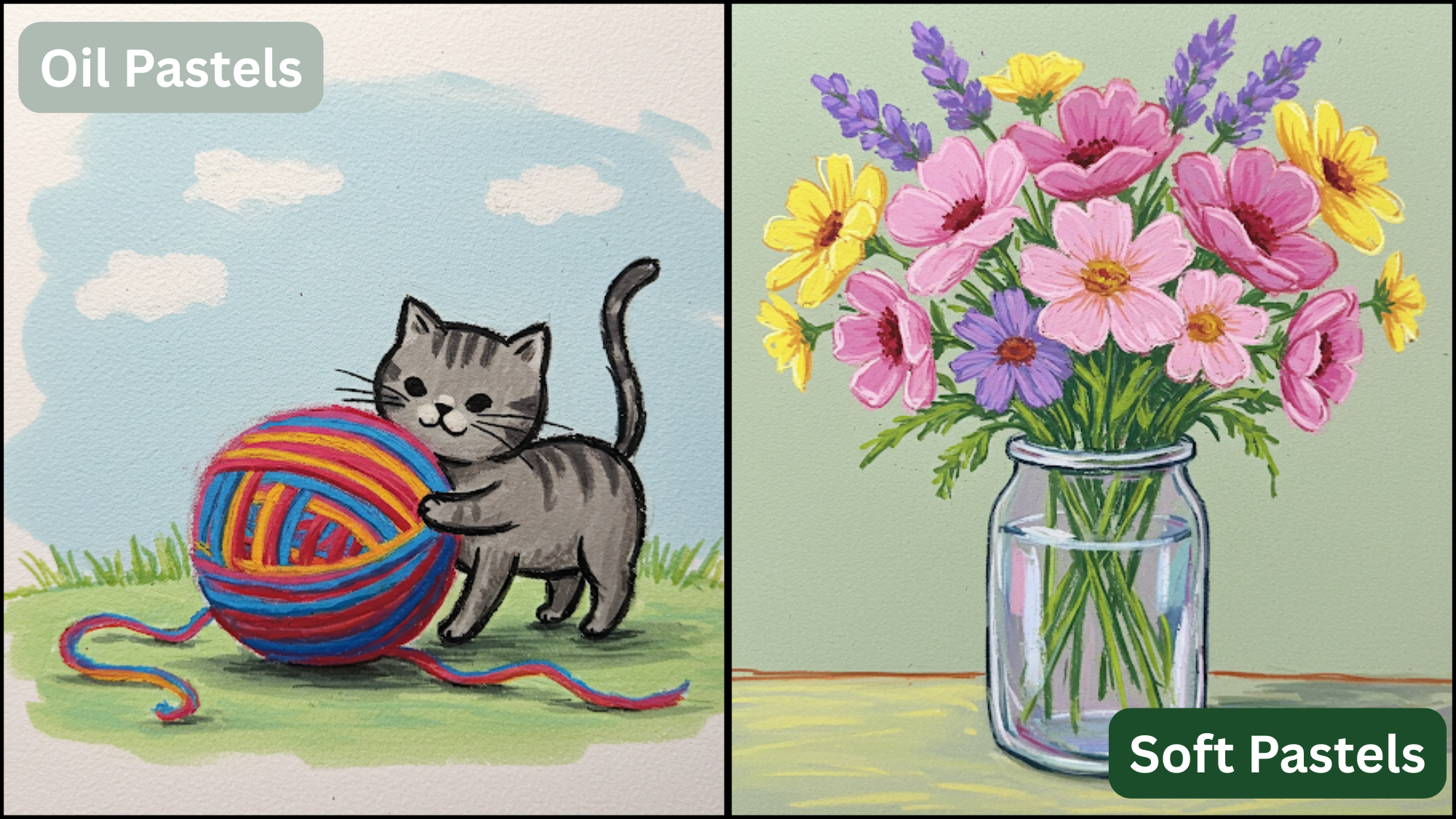
Both soft and oil pastels share some common ground despite their differences. These art tools offer artists creative options that other mediums can’t match.
Let’s look at what makes these cousins in the art world similar before we focus on what sets them apart.
| Similarity | Description |
|---|---|
| Rich Color Pigmentation | Both offer vibrant, intense colors due to a high pigment concentration. |
| Versatile Application | They can be layered, blended, and used on various textured surfaces. |
| Dry Media Form | Despite differences in texture, both are considered dry (non-liquid) art media. |
| No Drying Time Required | Both pastels are ready to work with instantly no waiting for drying. |
| Ideal for Expressive Art Styles | Their soft textures make them perfect for bold strokes and expressive artwork. |
| Require Fixatives or Sealing | Finished pieces usually need a fixative or sealant to prevent smudging. |
Soft Pastels vs Oil Pastels: Key Differences
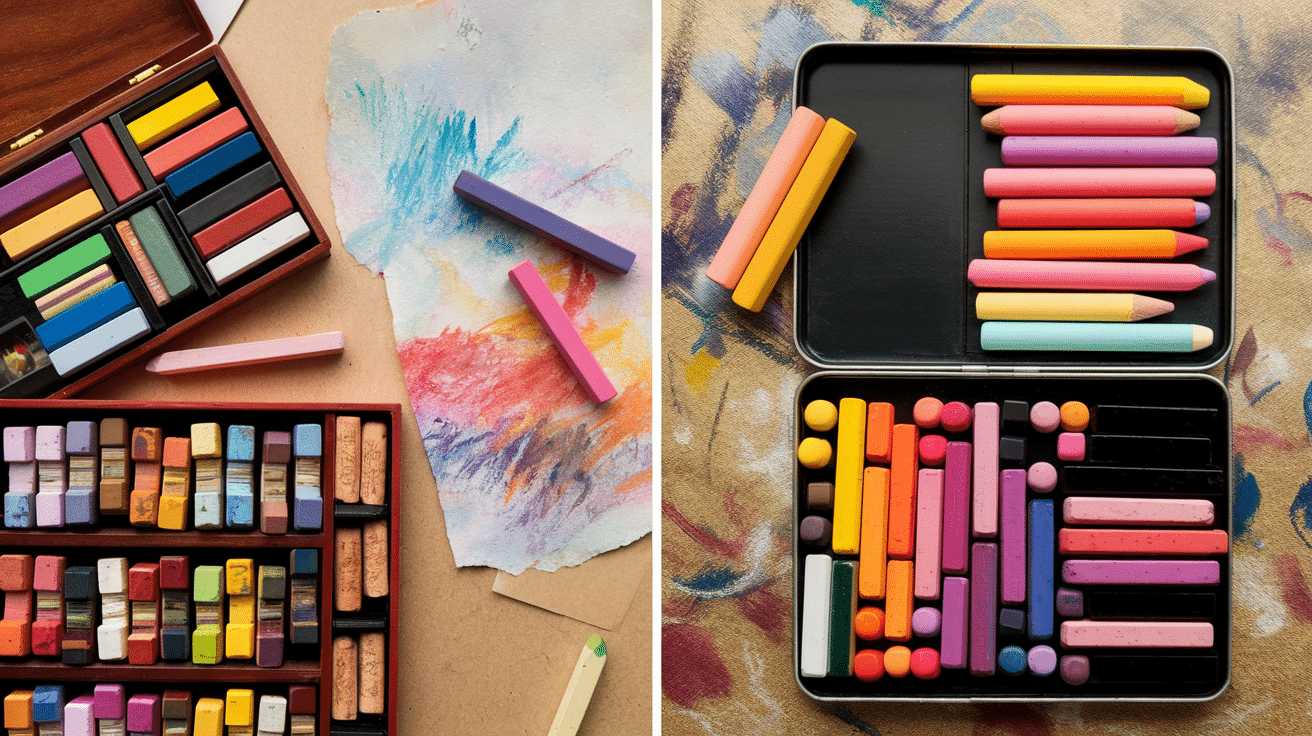
While soft and oil pastels may look similar at first glance, they differ greatly in how they feel, work, and what they can create. These differences impact which one might work best for your art style, goals, and personal comfort. Let’s break down their key differences.
Texture and Feel
Soft pastels feel chalky and dry to the touch. They break easily and create dust when you work with them. The texture is light and powdery, making them easy to smudge and blend with your fingers or tools.
Oil pastels feel waxy and firm, similar to crayons but creamier. They resist breaking and don’t create dust. The texture is smooth and buttery, with more resistance when applied to surfaces.
Blending Properties
Soft pastels blend very easily with light pressure. Colors mix well by smudging with fingers, cloths, or blending stumps. They create smooth transitions between colors. Oil pastels need more pressure or tools to blend. Artists often use their fingers, paper towels, or special tools like color shapers.
Heat can help soften them for easier blending.
Permanence and Fixing
Soft pastels remain dusty and can smudge even after completion. They need a fixative spray to set the artwork and prevent smudging. Even with fixative, they remain somewhat fragile.
Oil pastels never fully dry or harden since they contain non-drying oils. They don’t need fixatives but remain workable and can be smudged if touched. They can be affected by heat.
Surface Requirements
Soft pastels work best on paper with tooth or texture to hold the pigment. Special pastel papers, sanded surfaces, and textured boards work well. They can be used on smooth paper but with limited layering. Oil pastels work on more surfaces, including smooth papers, canvas, wood, and glass. They adhere well to many materials and can be used on less textured surfaces than soft pastels.
Color Layering
Soft pastels build up in thin, dusty layers that mix optically. Each new layer affects the one below it. Limited layering is possible before the surface becomes saturated.
Oil pastels can be applied in thick, opaque layers. New layers can completely cover previous ones. Multiple layers are possible without saturation issues.
Best Surfaces for Soft and Oil Pastels
Choosing the right surface makes a big difference in how your pastel artwork turns out. Both types of pastels have their own surface needs based on how they work and stick to materials.
The more texture a paper has, the more layers of soft pastel it can hold before becoming too full. In contrast, oil pastels are versatile with almost all surfaces.
Textured Paper for Soft Pastels
Soft pastels need surfaces with “tooth” or texture to grab and hold the powdery pigment. This is why artists rarely use smooth paper for soft pastels – there’s nothing for the dust to cling to. Some top options include:
- Pastel paper: Papers like Canson Mi-Teintes have a textured side made just for soft pastels
- Sanded paper: UART, Pastelmat, and other sanded surfaces hold many layers of soft pastel
- Textured boards: Commercial boards with a fine grit offer great durability
- Velour paper: Creates a soft, velvety finish perfect for portraits and smooth effects
Versatility of Oil Pastels on Paper, Canvas, and Wood
Oil pastels are more flexible with surfaces since they contain wax and oil that helps them stick. This gives artists more options:
- Smooth paper: Works well for simple drawings and sketches
- Textured paper: Adds visual interest as the pastel catches on the high points
- Canvas: Oil pastels apply well to primed canvas, similar to oil paints
- Wood panels: Smooth, primed wood accepts oil pastels beautifully
- Glass: With proper preparation, oil pastels can even work on glass
- Metal: Some artists use oil pastels on metal for unique effects
Soft Pastels vs Oil Pastels for Beginners: Which One is Easier to Start With?
For beginners, oil pastels often provide an easier starting point. They don’t create dust, break less often, and don’t require fixative spray. Their crayon-like feel feels familiar to most new artists, and they work on many common surfaces.
Soft pastels have a steeper learning curve. They break easily, create messes, and need special papers and fixatives. However, some beginners prefer their easy blending and vibrant colors.
Your choice might depend on your goals. If you want quick, portable art with minimal supplies, try oil pastels. If you’re drawn to fine art techniques and don’t mind some mess, soft pastels might suit you better.
Many teachers suggest starting with a small, basic set of either type to test which feels most natural to you.
The Final Thought
Understanding soft pastels vs oil pastels allows you to create unique ways to create beautiful artwork. The main choice boils down to your personal style and what you want to create.
Love blending colors with a dusty, velvet finish? Soft pastels might be your best match. Prefer a more resistant, waxy medium that works on many surfaces? Oil pastels could be your go-to tool.
As you’ve seen in this comparison, neither is “better” – they’re just different. Many artists keep both types in their studios for various projects.
Ready to try them out? Start with a small set of either type and see how they feel in your hands. The best way to know which pastel is right for you is to make some art with them!
What has been your experience with pastels? Share in the comments below!

